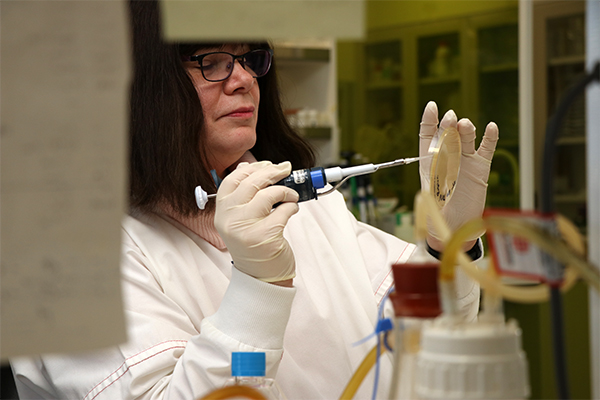
Professor Gilda Tachedjian is a Senior Principal Research Fellow at Burnet Institute, Life Sciences Discipline and head of the Retroviral Biology and Antivirals Laboratory. Her research focuses on antivirals for HIV treatment and prevention, including the role of the vaginal microbiome in modulating HIV acquisition.
Today on World AIDS Day, she writes about HIV prevention in women.
HIV is commonly thought of as an infection that predominantly affects men who have sex with men, but 53 percent of people globally living with HIV in 2022 were women and girls.
Women’s input into the design of HIV interventions, as well as access to a choice of diverse medication, will give them the right to choose how to prevent HIV in their own lives and could contribute to the goal of eliminating HIV transmissions by 2030.
Eliminating HIV transmission currently relies on using antiretroviral drugs in two different ways.
The first is 'treatment as prevention', where the viral load in someone living with HIV is suppressed to undetectable levels.
The second strategy is HIV pre-exposure prophylaxis, or PrEP, in which antiretroviral drugs are used to protect individuals at high risk of acquiring HIV through sex from their partners.
Oral PrEP medications are highly effective at reducing the risk of HIV transmission, as long as those using it remember to take it.
Men can miss some doses of oral PrEP and still be protected from HIV, but it’s less forgiving for a woman to miss taking daily oral PrEP.
Daily pills are needed to maintain protective drug levels in the vagina, which is the main route of HIV acquisition in women. In contrast, higher drug levels are reached in the rectum, which is the main route of HIV entry in men who have sex with men.
Having the ability to choose from and access a variety of PrEP methods allows women to choose what suits their different contexts and what is suitable at different points in their reproductive lifespans.
Women may prefer PrEP that is delivered via injection, implant, or vaginally, which are longer-acting and require less frequent dosing. For example, once every two months by injection, as opposed to daily.
While oral and injectable PrEP medications are effective, topical PrEP through vaginal delivery can have its advantages, delivering high antiretroviral drug levels locally in the vagina, with minimal drug levels in a woman's system, fewer side effects and a reduced chance of drug-resistance.
Vaginal delivery can come in a variety of forms, including gels, tablets, films and intravaginal rings.
The dapivirine ring — an intravaginal ring made of flexible silicone — is the only PrEP strategy specifically designed for women.
It has shown efficacy in preventing HIV infection in phase three clinical studies by gradually releasing 25mg of the antiretroviral drug into the vagina over four weeks.
Phase three studies showed the dapivirine ring could reduce HIV acquisition by 30 percent compared to a placebo ring, with efficacy being lower in women younger than 21 years due to low adherence.
However, follow-up studies showed it could provide about 50 percent or more protection if used consistently.
There are also devices in the development stage that go one step further, called multipurpose prevention technologies.
These include intravaginal rings designed to not only prevent HIV but also prevent unplanned pregnancy and even treat bacterial vaginosis — inflammation that increases the risk of a woman acquiring HIV and other STIs.
A product delivering molecules to the vagina that can target or prevent bacterial vaginosis as well as preventing HIV may also increase the efficacy of topical PrEP.
One device addressing multiple targets has the advantage of potentially addressing the stigma surrounding HIV prevention and improving overall wellbeing.
HIV has been around for more than 40 years, yet it remains a major public health problem.
Having a choice of contraceptives has played a major role in preventing unplanned pregnancies. The same options should be provided for women to protect themselves against HIV.
A version of this article was published on 360info under Creative Commons.
